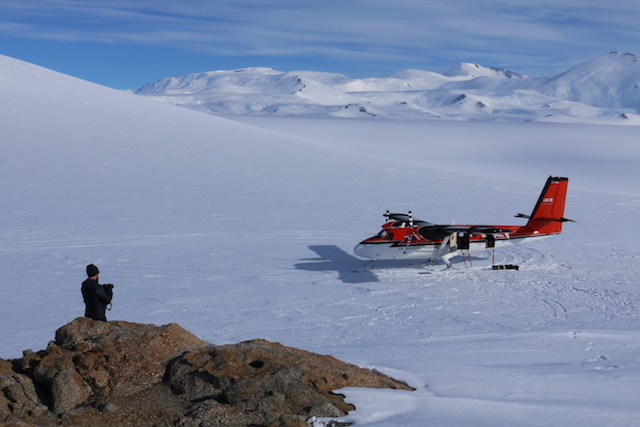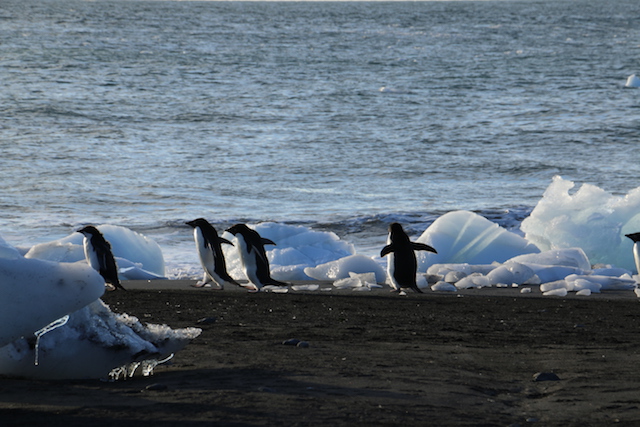When Elina and I returned to McMurdo on 22 January, it marked the final stretch of the team’s field season. One big objective that we still needed to accomplish was swapping out the remaining 4 AWS in the McMurdo area transmitting via UHF to Iridium. We didn’t waste any time upon return, and the team visited 3 AWS on 23 January: Willie Field and Phoenix by truck, and Lorne by helicopter on a “night flight”, meaning we flew after dinner with the night crew.
There were some issues to troubleshoot at Willie Field and Phoenix. We wanted to install an Iridium modem at Willie Field, and Phoenix was not transmitting properly. We figured that we would remove the enclosures from both sites to do the work on them in the lab. We could easily go back out to those sites to reinstall the enclosures and install a new power system at Phoenix.
On 29 January, Lee was able to get back to out to Willie Field and Phoenix to reinstall the enclosures and new power system. Both AWS are transmitting and functioning properly!
Later on 23 January, on that helo night flight, Lee and I went to Lorne to swap the UHF modem for the Iridium modem. It was a little tedious and got a little cold at times, but it was a success!
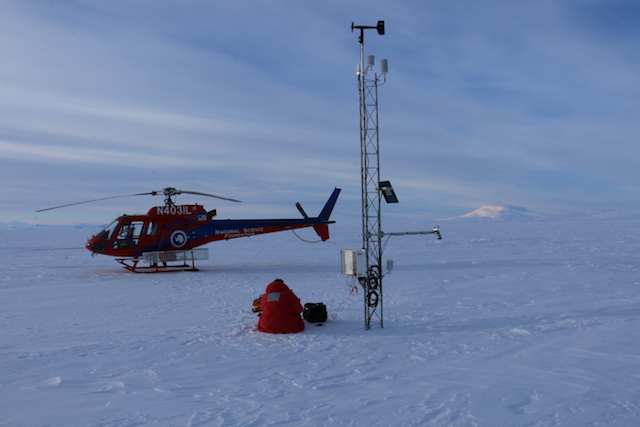
Lee installing the Iridium modem at Lorne, with the helicopter (left) and Mt Erebus (right) in the background. The low sun angle is definitely noticeable on these night flights, which is pretty cool.
On 25 January, Lee, Elina, and I, along with two boondogglers, went to Alexander Tall Tower! to raise the power system, enclosure, and install two disdrometers on the tower. A disdrometer is an instrument that measures how many particles hits it. We use this instrument to measure blowing snow, but sometimes it’s hard or impossible to distinguish between blowing and precipitating snow. Hence, we installed two instruments on the tower, one at about head height and the other about 20 feet above the surface.
Additionally, Lee needed to climb to the top of the ~88-foot tower to move a net radiometer, which measures incoming and outgoing longwave (earth) and shortwave (sun) radiation. He climbed the tower like a champ!

Lee climbing the tower, and the rest of us watching in awe and away from the base in case he drops something.
On 28 January, Lee flew out to Sabrina and Lettau to fix a cable issue at Sabrina and swap out the data card at Lettau. Initially, we were hoping to get to Emma on this same trip and swap its data card, but due to some issues at Willie Airfield that morning, the Twin Otter wasn’t able to depart until around noon which cut into the pilots’ duty day. Lee was the only one to go on this trip because Forbes, Elina, and I were on the helo schedule to fly to Cape Bird and swap the UHF modem for Iridium. We did not end up going that day.
On 29 January, while Lee drove out to Willie Field and Phoenix, Elina and I were able to fly to Emma to swap its data card and raise the power system. Luckily, the power system was only buried a couple feet. Keith from UNAVCO was with us because after our visit to Emma, we went to Ramsey Glacier to finish removing UNAVCO’s equipment from that site because their field team the previous day didn’t have enough ground time to do it for the same reason as us!
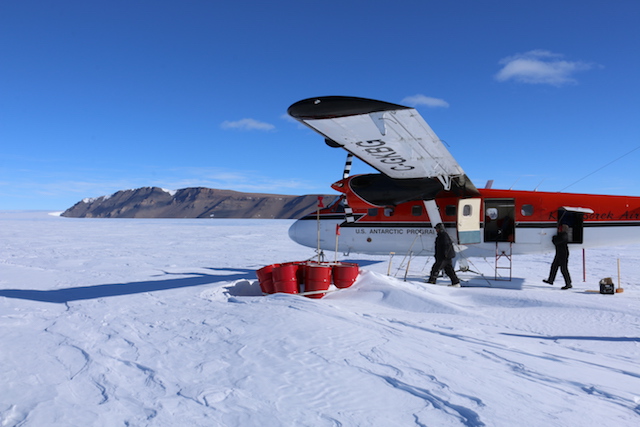
We stopped at a fuel cache at Ascent Glacier in the middle of the Transantarctic Mountains on our way back to McMurdo. It was a gorgeous flight.
On 31 January, Lee took a Twin Otter to Marilyn to raise the station while Forbes, Elina, and I waited for the weather to clear to go to Cape Bird via helicopter. Unfortunately for the three of us, we were put on weather hold until early in the afternoon, at which point we were canceled due to weather. Instead of sitting around in the lab for the rest of the day, Forbes and I decided to snowmobile out to Windless Bight to raise the station and swap the UHF modem for Iridium. It ended up being a great time, and once again since we were out later in the day/night, the sun angle made everything look extra good!

Windless Bight after we raised instrumentation on the tower, dug up the power system, and installed the Iridium modem and antenna.

A sign directed which us way to go. On our way back, we had to stop to take some pictures… Mt Erebus is in the background.
Our initial redeployment date was 4 February, so after our Windless Bight visit, we were all getting ready to pack up our things and close out the field season. We were still trying to get to Cape Bird, but a big storm hit on 1 and 2 February, keeping us from getting to Cape Bird. That also meant, however, that some northbound flights got delayed, thereby delaying our departure date by a day.
On 4 February, the night before Forbes, Elina, and I left the ice (Lee stayed for a couple extra days), the four of us were on the helo schedule to go to Cape Bird. The forecast was fairly unfavorable for Cape Bird, calling for 20-knot sustained winds with gusts to 35 knots. That didn’t bother us, though; we wanted to get this site visit done! As we were waiting in the helo passenger terminal, the pilot was expressing his doubts about being able to make it to Cape Bird due to the weather. But despite those doubts, we took off anyways. And… we made it there! The weather was actually fantastic. The temperatures were around freezing, and winds were much lighter than the forecast suggested. It was a great way to end a field season!
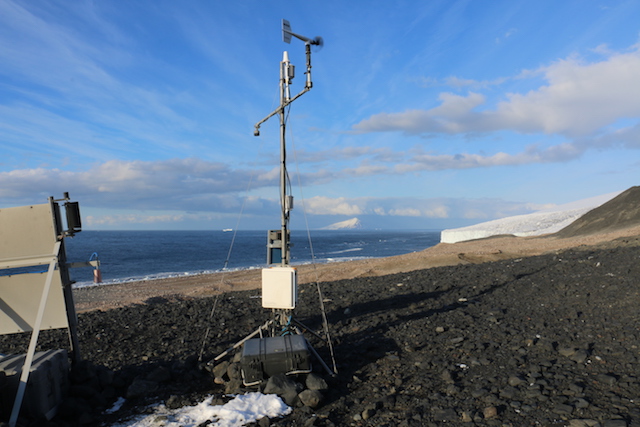
Cape Bird after we finished servicing, including installing the Iridium modem and antenna. The Adelie penguin rookery is in the background.
Lee stayed in McMurdo until 7 February to finish up some work at Willie Field AWS and install the MRI prototype PCWS next to the AWS at Willie Field. The MRI PCWS is now named Sarah, after Josh Thorsland’s late sister. Sarah is powered on but not transmitting, as we ran out of time to be able to verify Iridium transmissions. The prototype installs did not go quite as planned this season, with only one of the four installed, but good progress was made on the project throughout the season nonetheless. Servicing of the AWS network was a huge success this season, with Margaret being the only AWS we were unable to get to on our list. While the UHF-to-Iridium transition had its hiccups, all the new Iridium modems are transmitting (except for Minna Bluff)! That’s great! Once again, it was a long but exciting field season, and I hope you had fun reading along. Until next time…
Cheers! -Dave





